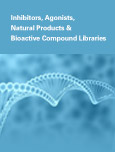| Cat. No. |
Product Name |
Information |
| PC-Ab1099 |
Dacetuzumab
|
Dacetuzumab (SGN-40, huS2C6) is a humanized anti-CD40 monoclonal antibody that specifically binds to and works against a molecule called a CD40 receptor. Dacetuzumab has been used in trials studying the treatment of Multiple Myeloma, Non-Hodgkin Lymphoma, Leukemia, Lymphocytic, Chronic, and Lymphoma, Large B-Cell, Diffuse. It is a humanized anti-CD40 antibody and induces cytotoxicity in human multiple myeloma cells. Dacetuzumab demonstrated antitumor activity in relapsed/refractory diffuse large |
| PC-Ab1098 |
Gemtuzumab
|
Gemtuzumab is a biosimilar directed against the extracellular domain of CD33. This product constitutes the immunogen used for the anti-Idiotype catalog numbers MAB9617 and MAB96171. The biotinylated antibody (catalog number FAB9635B) can be used in flow cytometry or various assay format to measure Siglec‑3/CD33 expression and can be detected by conjugated streptavidin. Gemtuzumab is the antibody part of Gemtuzumab ozogamicin.. |
| PC-Ab1097 |
Elotuzumab
|
Elotuzumab (HuLuc63) is a humanized mAb that targets the cell surface adhesion molecule CS1, which is selectively expressed on more than 95% of plasma cells and has little to no expression on normal tissues. Elotuzumab binds to CS1 on MM cells and NK cells recognize the Fc region of antibody by CD16 and thus mediate ADCC (Antibody-dependent cell-mediated cytotoxicity) against MM cells. In addition, binding of Elotuzumab on CS1 on the NK cells activate natural cytotoxicity of NK cells. Activation |
| PC-Ab1096 |
Ibalizumab
|
Ibalizumab (TMB-355) is a humanized IgG4 monoclonal antibody, blocks the entry of human immunodeficiency virus type 1 (HIV-1) by noncompetitive binding to CD4 T cell receptors. Ibalizumab specifically leads to conformational changes of the CD4 T cell receptor-gp120 complex thus preventing HIV fusion and entry. Ibalizumab is classified as an entry inhibitor. However, its action mechanism differs from previously known HIV entry inhibitors such as enfuvirtide (a HIV fusion inhibitor) and maraviroc |
| PC-Ab1095 |
Abciximab
|
Abciximab (Abcixifiban. |
| PC-Ab1094 |
Dupilumab
|
Dupilumab (REGN-668, SAR-231893) is a human monoclonal IgG4 antibody that inhibits interleukin-4 (IL-4) and interleukin-13 (IL-13) signaling by specifically binding to the IL-4Rα subunit shared by the IL-4 and IL-13 receptor complexes. Dupilumab down-regulates TH2 inflammation in a variety of allergic disorders, including atopic dermatitis, asthma and possibly other allergic diseases. Besides, Dupilumab was shown to inhibit IgE production by ex-vivo B cells induced by IL-4 treatment.. |
| PC-Ab1093 |
Gantenerumab
|
Gantenerumab (RG1450, RO4909832) is a fully human IgG1 antibody designed to bind with subnanomolar affinity to a conformational epitope on Aβ fibrils. It encompasses both N-terminal and central amino acids of Aβ. The therapeutic rationale for this antibody is that it acts centrally to disassemble and degrade amyloid plaques by recruiting microglia and activating phagocytosis. bind and reduce amyloid-beta plaque formation in the brain, a hallmark of Alzheimer’s. It also neutralizes oligomeric Aβ4 |
| PC-Ab1092 |
Simtuzumab
|
Simtuzumab (SIM, GS-6624) is a humanized IgG1 antibody against lysyl oxidase like-2 (LOXL2). Simtuzumab binds to LOXL2, was shown to have a role in suppressing bleomycin-induced pulmonary fibrosis in a murine model. pecifically target and block the LOXL2 which has been assigned to an important role in fibrosis. Besidesm, LOXL2 is one of several secreted copper-binding amine oxidases that oxidize primary amine substrates to aldehydes. It is widely expressed, particularly in placenta, uterus, and |
| PC-Ab1091 |
Rozanolixizumab
|
Rozanolixizumab (UCB7665) is a humanised, high-affinity, human IgG4 anti-FcRn monoclonal antibody, binds to human FcRn and cynomolgus monkey FcRn with a similar affinity at both pH 6.0 (Kd=23 pM and 25 pM, human and cynomolgus monkey, respectively) and pH 7.4 (34 pM and 53 pM, human and cynomolgus monkey, respectively. Rozanolixizumab inhibits the recycling (IC50=0.41 nM) of human IgG by human FcRn-transfected MDCK cells in a dose-dependent manner. The neonatal Fc receptor (also FcRn, IgG recept |
| PC-Ab1090 |
Batoclimab
|
Batoclimab (HBM9161, IMVT1401) is a fully human IgG1 anti-FcRn mAb, blocks FcRn-IgG interactions, accelerating the degradation of autoantibodies and leads to the treatment of pathogenic IgG-mediated autoimmune diseases. The neonatal Fc receptor (also FcRn, IgG receptor FcRn large subunit p51, or Brambell receptor) is a protein that in humans is encoded by the FCGRT gene. It is an Fc receptor which is similar in structure to the MHC class I moleculethat functions to protect IgG and albumin from c |
| PC-Ab1089 |
Nipocalimab
|
Nipocalimab (M281, JNJ-80202135) is a fully human IgG1 mAb that selectively bind, saturate, and block the IgG binding site on the endogenous neonatal fragment crystallizable receptor (FcRn). Nipocalimab has potential in treatment of SLE through lowering of pathogenic IgGs and immune complexes. The neonatal Fc receptor (also FcRn, IgG receptor FcRn large subunit p51, or Brambell receptor) is a protein that in humans is encoded by the FCGRT gene. It is an Fc receptor which is similar in structure |
| PC-Ab1088 |
Relatlimab
|
Anti-Human LAG3 [25F7-RGS(BMS986016)] -hIgG1 is a human IgG1 anti-LAG3 blocking mAb. Combination of LAG-3 with the immunomodulatory drug (IMiD) lenalidomide significantly increased IL-2 production by T cells and antibody-dependent cytotoxicity (ADCC) mediated by NK cells. These datas provide new insights into the potential anti-leukemic effects. |













